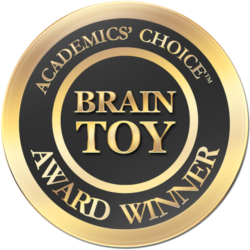Go Vet! SuperPower Pack
SuperPower Packs are self-guided, educational experiences for kids lacking access to in-person veterinary role models. Each SuperPower Pack contains an activity to help kids engage in veterinary careers by taking on the persona of a veterinary superhero. The Go Vet! SuperPower Pack helps kids learn about many kinds of veterinarians and the wonderful things they do to help people and their animals! Playing cards depict a kind of veterinarian or a veterinarian in action. Kids take turns Going Vet by picking a card and then drawing, talking, making noises, and acting out clues to help the other players guess the type of vet or what the vet is doing who is pictured on the card. Thanks to support from NIH NIGMS SEPA and our sponsors we have given thousands of SuperPower Packs to under-resourced children who are participating in our programs.
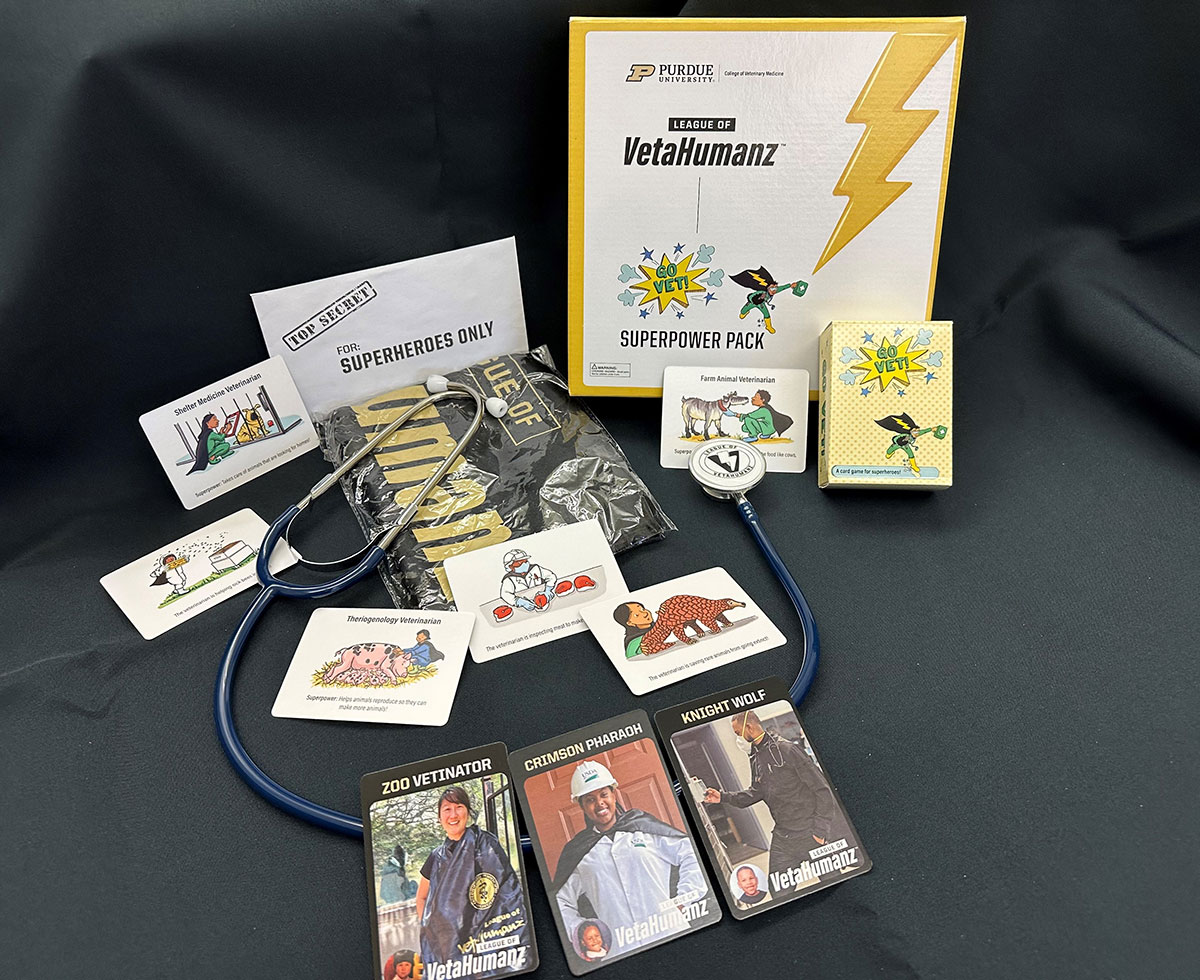
2023 Academic’s Choice Award Winner
“This is a fun, creatively designed game!…“
“I liked the supplies they included with the game. Those were a fun touch and added more to the experience of pretending to be the different vet cards….Overall, it’s a fun game to practice reading and counting skills, and learn about careers in veterinary science and animals.”
“Skills practiced were reading, counting, problem solving, communication skills, and working together.”
The Unboxing
About Go Vet!
Go Vet! is a game where kids can explore careers in veterinary medicine and learn what veterinarians do to keep people and their animals healthy!
- 10+ min
- 2+
- 6+
Play Go Vet and build your Stethoscope!
Inside each Go Vet! SuperPower Pack is a real stethoscope!
Here is how to put it together.
Step 1: Take the three parts out of the bag.
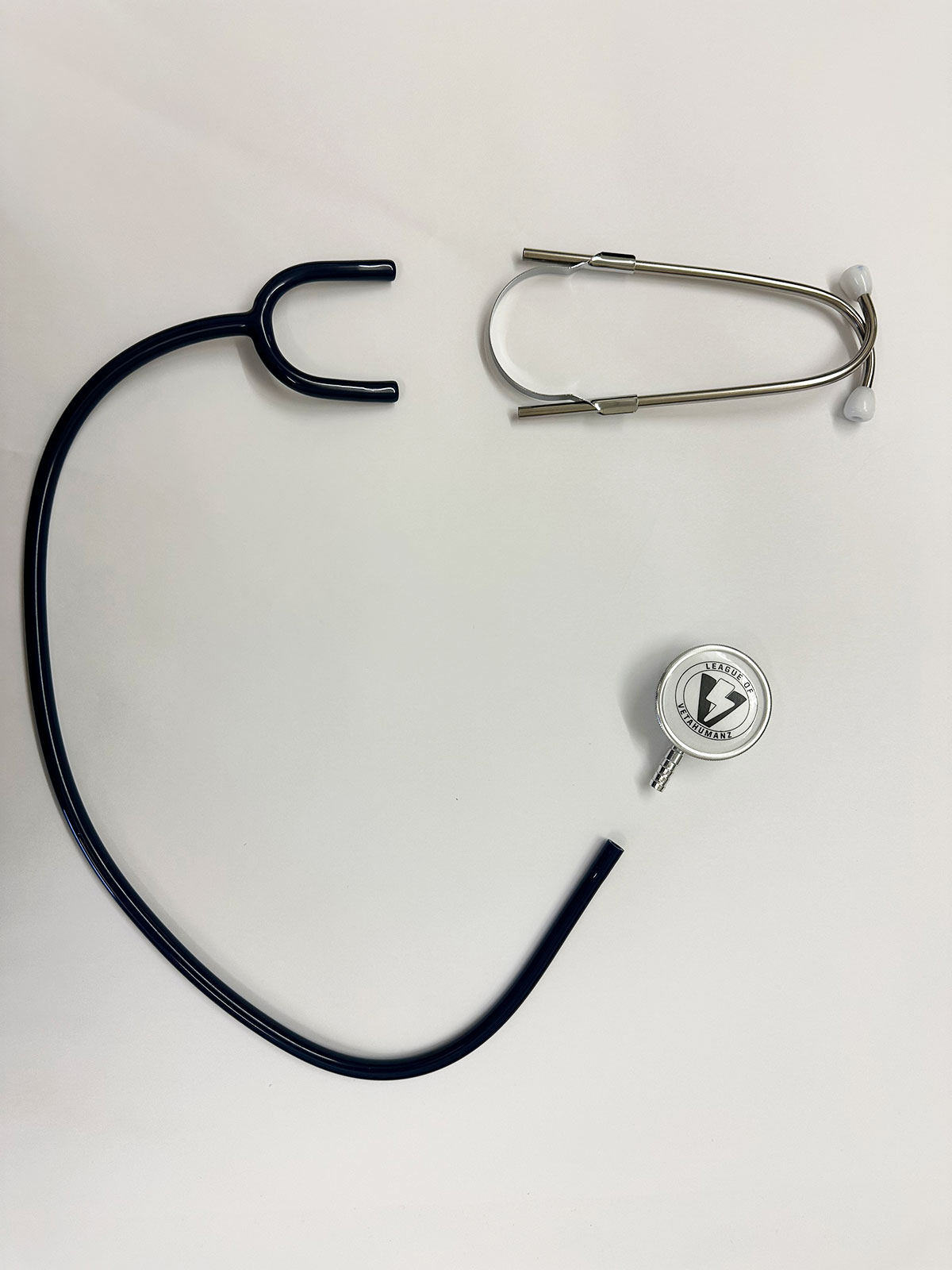
Step 2: Attach the part that goes in your ears (headset) to the tubing.
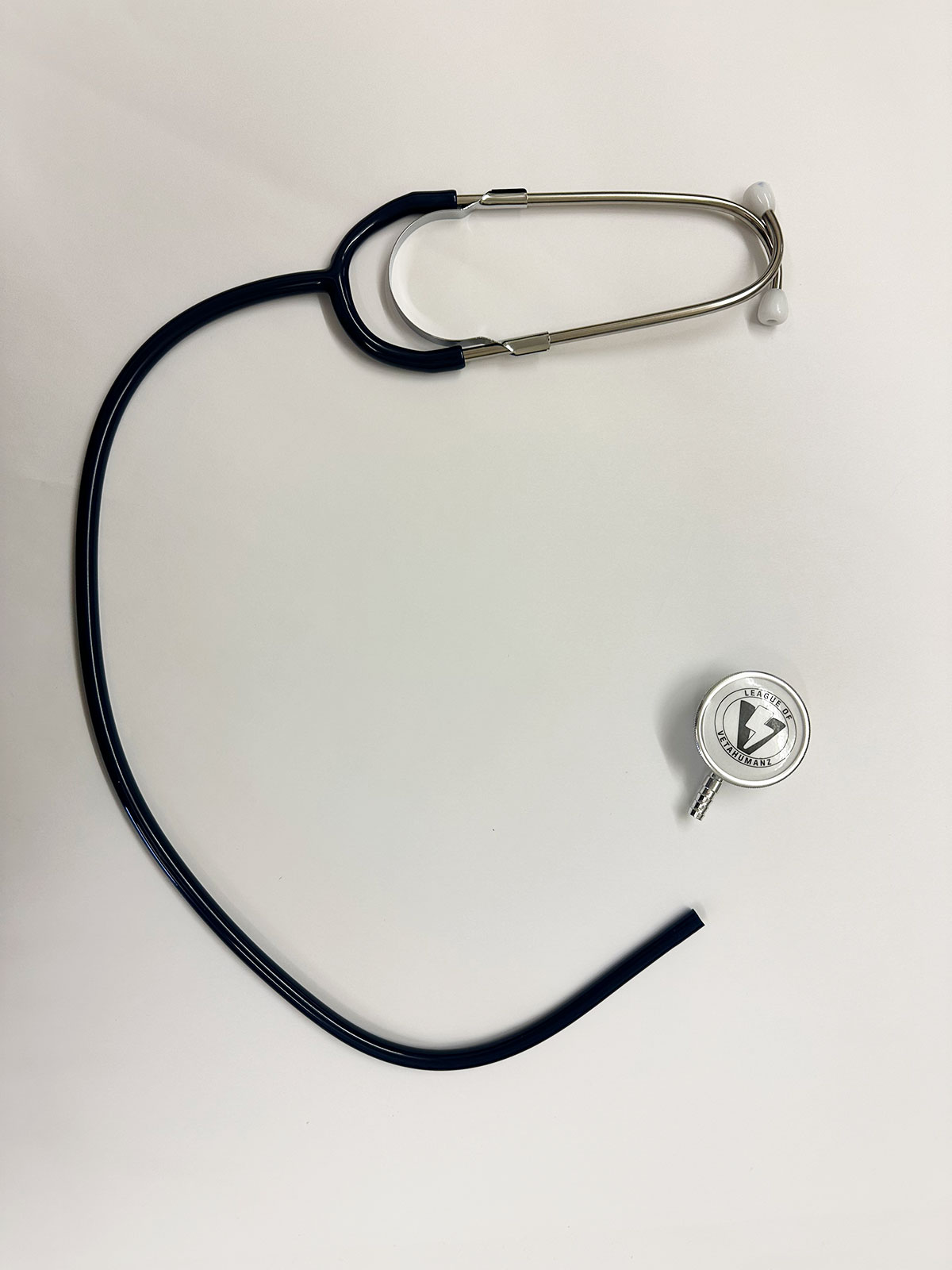
Step 3: Attach the part that you place on the animal (bell) to the tubing.
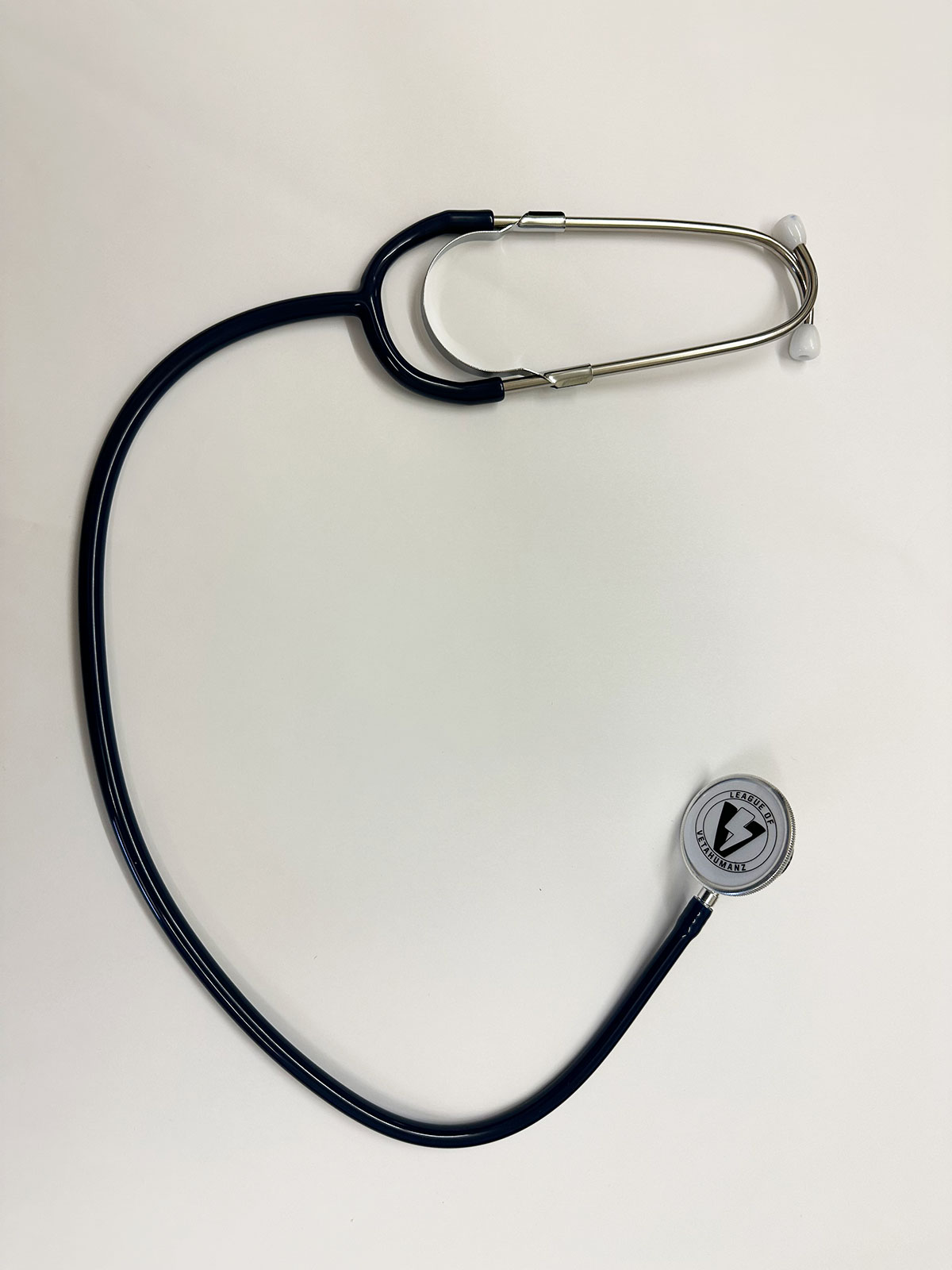
Follow @pucvm on Facebook, Instagram, TikTok, and LinkedIn for daily Beast Move challenges.
Download the Game
Dear Superhero,
Being a veterinarian is the best job ever because there are so many things you get to do! In this game you get to try out being all different kinds of vets so you can decide the kind of vet you want to be. Pick a card and become that veterinarian! See if your friends can guess the kind of vet you are or what you’re doing. If you put on the cape and wear the stethoscope while you play, you can borrow our veterinary superpowers!
Use your powers for good!
Go Vet! Academic Standards
https://www.nextgenscience.org/
https://www.cdc.gov/healthyschools/health_and_academics/index.htm
Next Generation Science Standards
K-2nd Grades
K-LS1-1 Use observations to describe patterns of what plants and animals (include humans) need to survive.
3rd-5th Grades
4-LS-1 From Molecules to Organisms: Structures and Processes
Construct an argument that plants and animals have internal and external structures that function to support survival, growth, behavior and reproduction.
4-LS-2 From Molecules to Organisms: Structures and Processes
Use a model to describe that animals receive different types of information through their senses, process the information in their brain, and respond to the information in different ways.
National Health Education Standards
PreK-2nd Grade
1.2.2 Recognize that there are multiple dimensions of health.
1.2.5 Describe why it is important to seek health care.
3.2.1 Identify trusted adults and professionals who can help promote health.
3.2.2 Identify ways to locate school and community health helpers.
5.2.1 Identify situations when a health-related decision is needed.
3rd-5th Grades
1.5.2 Identify examples of emotional, intellectual, physical, and social health.
1.5.5 Describe when it is important to seek health care.
2.5.1 Describe how family influences personal health practice and behaviors.
2.5.3 Identify how peers can influence healthy and unhealthy behaviors.
2.5.4 Describe how the school and community can support personal health practices and behaviors.
3.5.1 Identify characteristic of valid health information, products, and services.
3.5.2 Locate resources from home, school, and community that provide valid health information.
4.5.1 Demonstrate effective verbal and nonverbal communication skills to enhance health.
5.5.1 Identify health-related situations that might require a thoughtful decision.
5.5.2 Analyze when assistance is needed in making a health-related decision.
5.5.3 List healthy options to health-related issues or problems.
5.5.4 Predict the potential outcomes of each option when making a health-related decision.
5.5.5 Choose a healthy option when making a decision.
5.5.6 Describe the outcomes of health-related decisions.
Common Core Standards-English Language Arts
Kindergarten
CCSS.ELA-LITERACY.RI.K.1With prompting and support, ask and answer questions about key details in a text.
CCSS.ELA-LITERACY.RI.K.3With prompting and support, describe the connection between two individuals, events, ideas, or pieces of information in a text.
CCSS.ELA-LITERACY.RI.K.7With prompting and support, describe the relationship between illustrations and the text in which they appear (e.g., what person, place, thing, or idea in the text an illustration depicts).
CCSS.ELA-LITERACY.RI.K.9With prompting and support, identify basic similarities in and differences between two texts on the same topic (e.g., in illustrations, descriptions, or procedures).
First Grade
CCSS.ELA-LITERACY.RI.1.1Ask and answer questions about key details in a text.
CCSS.ELA-LITERACY.RI.1.3Describe the connection between two individuals, events, ideas, or pieces of information in a text.
CCSS.ELA-LITERACY.RI.1.4Ask and answer questions to help determine or clarify the meaning of words and phrases in a text
CCSS.ELA-LITERACY.RI.1.6Distinguish between information provided by pictures or other illustrations and information provided by the words in a text
CCSS.ELA-LITERACY.RI.1.7Use the illustrations and details in a text to describe its key ideas.
CCSS.ELA-LITERACY.RI.1.9Identify basic similarities in and differences between two texts on the same topic (e.g., in illustrations, descriptions, or procedures).
CCSS.ELA-LITERACY.RI.1.10With prompting and support, read informational texts appropriately complex for grade 1.
2nd Grade
CCSS.ELA-LITERACY.RI.2.1Ask and answer such questions as who, what, where, when, why, and how to demonstrate understanding of key details in a text.
CCSS.ELA-LITERACY.RI.2.3Describe the connection between a series of historical events, scientific ideas or concepts, or steps in technical procedures in a text.
CCSS.ELA-LITERACY.RI.2.6Identify the main purpose of a text, including what the author wants to answer, explain, or describe.
CCSS.ELA-LITERACY.RI.2.7Explain how specific images (e.g., a diagram showing how a machine works) contribute to and clarify a text.
3rd Grade
CCSS.ELA-LITERACY.RI.3.1Ask and answer questions to demonstrate understanding of a text, referring explicitly to the text as the basis for the answers.
CCSS.ELA-LITERACY.RI.3.3Describe the relationship between a series of historical events, scientific ideas or concepts, or steps in technical procedures in a text, using language that pertains to time, sequence, and cause/effect.
CCSS.ELA-LITERACY.RI.3.4Determine the meaning of general academic and domain-specific words and phrases in a text relevant to a grade 3 topic or subject area.
CCSS.ELA-LITERACY.RI.3.7Use information gained from illustrations (e.g., maps, photographs) and the words in a text to demonstrate understanding of the text (e.g., where, when, why, and how key events occur).
4th Grade
CCSS.ELA-LITERACY.RI.4.1Refer to details and examples in a text when explaining what the text says explicitly and when drawing inferences from the text.
CCSS.ELA-LITERACY.RI.4.3Explain events, procedures, ideas, or concepts in a historical, scientific, or technical text, including what happened and why, based on specific information in the text.
CCSS.ELA-LITERACY.RI.4.4Determine the meaning of general academic and domain-specific words or phrases in a text relevant to a grade 4 topic or subject area.
CCSS.ELA-LITERACY.RI.4.7Interpret information presented visually, orally, or quantitatively (e.g., in charts, graphs, diagrams, time lines, animations, or interactive elements on Web pages) and explain how the information contributes to an understanding of the text in which it appears.
CCSS.ELA-LITERACY.RI.4.9Integrate information from two texts on the same topic in order to write or speak about the subject knowledgeably.
5th Grade
CCSS.ELA-LITERACY.RI.5.3Explain the relationships or interactions between two or more individuals, events, ideas, or concepts in a historical, scientific, or technical text based on specific information in the text.
CCSS.ELA-LITERACY.RI.5.4Determine the meaning of general academic and domain-specific words and phrases in a text relevant to a grade 5 topic or subject area.
CCSS.ELA-LITERACY.RI.5.9Integrate information from several texts on the same topic in order to write or speak about the subject knowledgeably.
This program is supported by the Science Education Partnership Award (SEPA) program of the National Institute of General Medical Sciences (NIGMS) of the National Institutes of Health (NIH). Its contents are solely the responsibility of the authors and do not necessarily represent the official views of the NIH.


